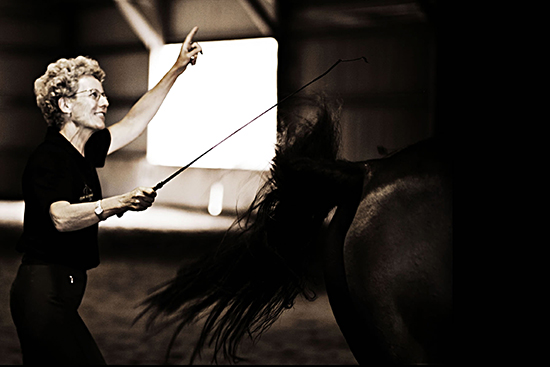 A clinic with Marianne Lichtwark
A clinic with Marianne Lichtwark
Story by Chris Hector and photos by Roz Neave
It was a morning that underlined the things I really love about dressage, and the things I really hate…
The idea for a story with Marianne started when I found myself sitting next to her at a couple of big dressage competitions. Marianne is not a big-noting self promoter – quite the reverse, she speaks softly, very softly, but listen hard, and you soon realise that this woman really has an eye, and the knowledge to back it up.
I knew that Marianne had migrated from Germany with her late husband, Edgar Lichtwark, to work at Don Scott’s ill-fated Horseworld project, and that after the death of her husband a few years back, she kept quietly teaching her growing group of loyal students… and they do have to be both loyal, and ready for some pretty confronting criticism because Marianne is not one of the legion of instructors who have become superstars on the Australian dressage teaching circuit because of their ability to say what their students would like to hear…
Marianne is also something of a rarity in that she is actually qualified to teach, having spent five years studying with one of the greatest trainers and equestrian thinkers of modern times, Paul Stecken, who for 35 years was the head of the Westfalen Riding and Driving School, and who continues in his 96th year to hold aloft the principles of classical horsemanship, and act as a mentor to riders like Ingrid Klimke and an inspiration to horsemen the world over.
Marianne was teaching at Oakwood, and in her first session was working with one of her regular students, Oakwood head trainer, Sue Chandler riding Fifi (Tasman Park Fanfare, owned by Carol Simpson, by Flemmingh out of a Pik Labonics mare).
It was a delightful session to witness. The rider quietly gymnasticising the 6-year-old chestnut, the instructor knowing exactly when to push, when to back off, and how to help the rider make the next step…
I just love instructors who balance their critique, concentrating not on the horse or the rider, but balancing the two, realising and emphasising that without a rider who is properly in balance, the horse can never be expected to go in a balanced and happy manner.
Sue has warmed up Fifi in a sweet forward rising trot: “That is good, get a nice stretch, then re-balance by sitting, but when you go to sitting trot make sure she accepts your weight and does not change the trot – if the trot changes, go rising again. Sit tall, scan your body, think of your position, out of the correct seat comes the correct aids…”
Transition to walk.
“Lengthen the rein, it is not good to ride a young horse with the same length of rein in walk as trot, give more rein, feel her stretch to the bridle. When you go to trot again, shorten the rein by a hand width or two. Always take the time to feel the horse in the transition, it is not just the end result that you care about.”
“Now try some lengthening in trot and when she feels good, risk it. Okay we can get a running trot at times but risk it because if you never risk it, you will never get it. If you never go to the border line and risk it, it won’t happen, and you end up with a running medium.”
And the trot lengthens sweetly so it was time to canter and once again, how you get there is as important as the result:
“In the transition to canter, don’t just think about the canter, re-balance the trot and think about the transition, taking time in the transitions always pays off. The canter is good but always encourage her to bring her nose out a little and when you go to make the transition to walk, be careful that there is no shortening of the neck, that is why it is important to wait for the right moment to ask for the transition.”
“She is a young horse, do not ask too much. Transition to walk and let her lengthen, but even in the walk on the buckle, always be aware of how much ‘push’ you need: as much as necessary, as little as possible. Try for little aids, and a good reaction, that is the main criteria of relaxation – the horse allows the rider to sit and push.”
As with all real instructors, there are no moments of total relaxation for the rider:
“Halt, and ask her to stand for at least ten seconds, on the bit and not hollow. The riding does not stop in the halt.”
“Now try a little leg yielding, think about your body, your firmness in the seat is what makes your leg softer. You give the sideways aids from your whole body. Now try a few rising / sitting trot transitions, stay spongey and soft in your body so her trot is the same. Smoochy, smoochy sitting – if she reacts, repeat, never keep going grinding your teeth in sitting trot, if it is not comfortable, get out of there.”
“Once she doesn’t run off, you can do some more canter work.”
This time Marianne is happy with the upwards transition:
“That was good, she went a little up in the air, but she wasn’t running off. Now try to get her up in the shoulder but without shortening her neck. She is starting to tilt her head, starting to get a little tired, come back to trot, but make sure there is no running away. You have to make her even a bit lazy, so you can push.”
“With this horse, to get bigger extensions you need to be able to push, make her a little lazy, come back and then put the leg on and NOW! – so the hind leg really steps under straight away.”
“I like to start on the horse’s easy side and end on the easy side, make it comfortable for them. Now we do with her what we do with all young horses, reins to the buckle. Find the balance so you can open your hands but still feel you can push. Come back to walk, no rein, just sitting in the saddle.”
“The more talented, the more sensitive they are, the more you have to pay attention to every detail. Once you lose that, it will never come back.”
The next rider enters, and I am sorry to say that this session underlined everything I don’t like about our current dressage scene. It is a style of riding that I see all the time and often the perpetrators end up with ribbons at major Australian Dressage competitions. It is not necessary to name either horse or rider, they could have been any of a horde who all look and go much the same…
Not that it is a peculiarly Australian phenomena. I had just finished reading Gerd Heuschmann’s new book, Balancing Act: The horse in sport – an irreconcilable conflict? In that book, Gerd discusses how the aggressive competition seat pushes the horse’s back away from the rider and results in a distortion of the horse’s natural movement.
Dr Heuschmann’s insights are hardly modern, Gerd quotes from a document written by Berndhardt Hugo v Holleaffer in 1896, on the difference between a leg and a back mover:
“I count as movements not only all gaits, walk, trot and canter, but also jumping over obstacles and the so-called school airs, including those performed on the spot. The horse cannot perform any of these movements well without arching (tension) and relaxing the spinal column, which we call swinging. Swinging starts with the hind legs, travels through the spine to the head and the front legs and brings the horse into contact with the bit. The swings can be seen, felt and heard; the elasticity and power of the movements, the whole worth of the riding horse comes from them. One differentiates between back movers and leg movers: The latter move without using the spine. The movements are hard and tense, not ground covering, are either rushing or too sluggish and earthbound. The leg mover is either behind the aids or leaning on the reins, and is not reliably obedient. Back movers use swinging to reach forward and down in all movement; the stronger and more playful the swinging, the more active and ground covering, the softer and more elastic, the more vigorous and resolute the movements are. The rider and horse stay healthy and the former beats the latter in perfect obedience.”
It is kind of spooky that something written 116 years ago, should be so entirely accurate as a description of the way this combination went. Like so many of Australia’s ‘FEI’ horses, the natural paces have been destroyed by an aggressive competition seat and the trot has become what Nick Williams dubbed, ‘pissage’. Bravely, Marianne set out to try and show how the horse could relax and trot in a natural way. And sure enough, it did.
In her break, I had time to sit and talk with Marianne, and I was reminded again, when she speaks, it is worth paying attention:
“I sometimes ask myself why – when we do have the opportunity to see good riders and good trainers and good horses – why is it not happening more? Why? It should be like a pebble thrown in the water, creating rings – why when there are people riding so well, doesn’t it create more rings?”
“I think so many riders, especially in Australia are just focused on going up a level, up a level, one more, one more. And they end up practising the end result – what they have to do in the test, and they drag and pull the horse in an effort to get there, it is not good for the horse, but it is also not good for their own natural comfort. I don’t know how they can enjoy riding. Some of the riders – we even saw it in London – it’s agony to watch, what must it be like to be the rider?”
“Being critical is easy, I think the best we can do is just say what we think. I am often in the position where riders come to me and all they want to do is what they themselves call ‘the tricks’ – there is no real understanding of training a horse in a healthy, logical way, so that the horse actually gets better and can use its potential.”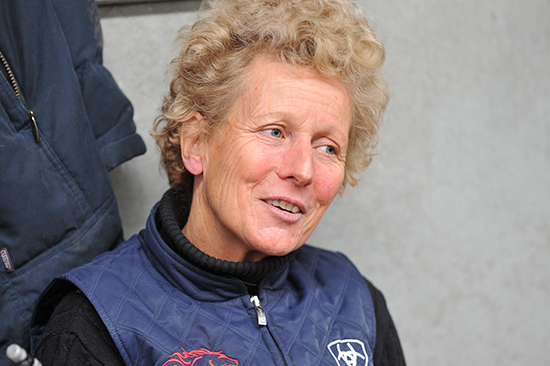
It must have been a shock for you to come to Australia?
“That’s the challenge to do what you can, wherever you are, and make the most of it… But it can be funny, I remember Bimbo Peilicke saying to my husband, Edgar, ‘do you still remember how it looks when it is right?’ We have to make this effort every single day, to school our eye, to judge correctly, is the horse comfortable? If the horse is constantly uncomfortable, it can never progress.”
And when we see competing in Australia ‘Grand Prix’ horses that can’t walk, trot or canter – it is so hard because our riders don’t ride against competitors like the Italian girl, Valentina Truppa with Eremo del Castegno, or Kristina Sprehe with Desperados – not to mention riders like Carl and Charlotte, where the riding is beautiful, soft, correct…
“How it should be… but we have to work on all sides. The judges often get blamed, because they have a big influence, not just in Australia, but world wide. You have to reward the good things with high marks, and where there is in principle a problem, you have to let the riders, and the public, really know that is wrong. It is just not good enough if the horse travels around the whole test with its tongue out, to ignore that.”
“It is hard to understand because we do have videos, where we can sit down and study it.”
“Often it is that the rider is not schooled enough to do it, physically, they have to first learn to have their own balance on a school horse. This is a big problem here in Australia – often I find the problem for the rider is that they have been asked to do a job that they physically can’t do because they have never learned on a suitable horse to feel what it is like when it is right.”
“I have learned one thing, and I stick to my guns, and the rider might find it boring at first but once they become more comfortable then they appreciate it. Once they feel what it is like when the horse swings, and they are actually sitting, then it is easy.”
“The worst comment I heard during the Olympic Games, came from the commentator and she said, oh these Grand Prix movements, they are hard to sit. I thought, don’t give it away that you’ve really never felt it! It is sad, the young people should not be told that – if it doesn’t get easier then we are doing something wrong.”
“When you look at a rider like Charlotte Dujardin, how easy it looks – and then the whole scene becomes what we love, that’s when we get it excited. But if the basic rideability is not there, if the horse is not ready for the work, that is painful, and we see it too much, far too much.”
How did you come to work with Paul Stecken?
“I did my apprenticeship in Münster with Paul Stecken. I was very lucky to get the spot there. I was just finishing school when I went there, nearly 18, and I was five years there – and on a regular basis I go back.”
“The beauty was that I got to spend a week with him after I went to Aachen this year. Whenever I have a chance to sit down with him, he is still the teacher – he comes with material, he gives me photos, he gives me articles he has written. Whatever he says to me, it is like a classical piece of music that I have heard a million times, and each time I hear it, I enjoy it more.”
“It makes sense, and there is passion there, there is logic, it is progressive: everyone can learn to ride a horse, if they are really truly committed, and passionate enough, and patient enough. Sometimes some horses and riders have a very slow start and you think, god, will we ever get somewhere, then suddenly they pick up and it starts to happen. Others have a quick start and they fall back. We have to accept that, that is life.”
“Paul Stecken is an absolutely dedicated horse person. I don’t think there is one question you could ask him that he would not have a good answer. I am so blessed to have been his apprentice, and I still have the connection, we write and phone… when the Olympics were on, we were on the phone all the time, I was terrified what my phone bill would be – but this is what it is worth living for. If you only have one or two people like that in your life, you can use that strength to get you there, and transfer it to the weaker areas, and then you get quite an amazing amount of pleasure.”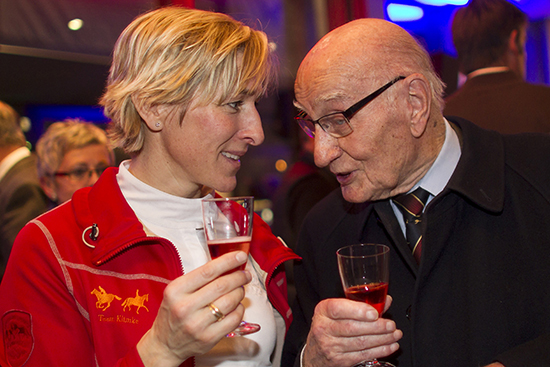
Ingrid Klimke with Paul Stecken (Photo: Jacques Toffi)
“I have clinics on a regular basis, and the riders take it on board, and the teaching becomes easier and easier because we know each other. Then it is really rewarding, beautiful. And it does improve – and I have to say for some horse rider combinations, it is quite tough. The rider has to deal with something he is not really ready for, and the horse has to cope with something that is really not good enough for, so you have to make compromises on a small scale. I say to my riders, as long as we head in the right direction, we can live with the fact that it is slow, and our time will come, then it all of a sudden comes. And when the horse goes well, then the people sitting on the side say, anyone can ride that horse, it’s easy, but how much time and patience and goodwill went in to get there. I take my hat off to a lot of riders, and it doesn’t matter what level they are on.”
“The sad thing is if someone calls themselves a Grand Prix rider and really it is torture not just for the horse, but the rider as well.”
“Part of the problem is that the breeding of the horses has become so good that it covers up so much weak riding. In former times when the horses had upside-down necks and hind legs were always out, you had to do a much much better, safer work to get anywhere to get a good shape. These days the horses when they are young horses, they look like the end product and this is why we lose so, so many talented horses, the riders will not take the time to train them progressively and logically, so that it can be wonderful for the horses and for the riders.”
I guess one step would be for a few more riders to stop listening to the loud-voiced fakes, and take some time to learn from trainers like Marianne, who really do know what they are talking about.
Sadly since we wrote this article, Marianne Lichtwark has passed away, a loss to Australia.
This article first appeared in the March 2013 issue of THM.



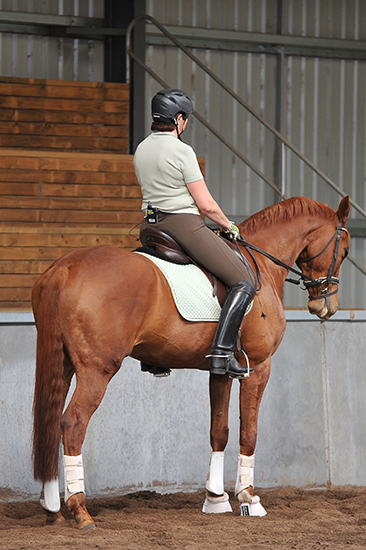
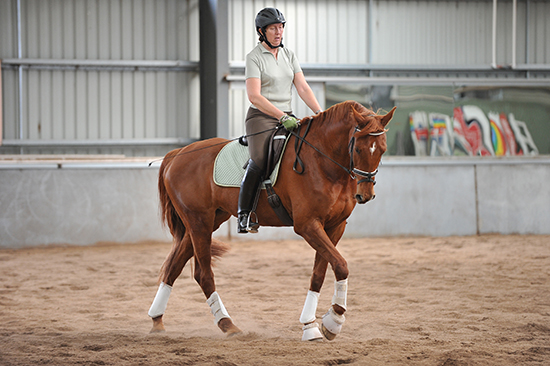
“Part of the problem is that the breeding of the horses has become so good that it covers up so much weak riding. In former times when the horses had upside-down necks and hind legs were always out, you had to do a much much better, safer work to get anywhere to get a good shape. These days the horses when they are young horses, they look like the end product and this is why we lose so, so many talented horses, the riders will not take the time to train them progressively and logically, so that it can be wonderful for the horses and for the riders.”
Yes indeed.